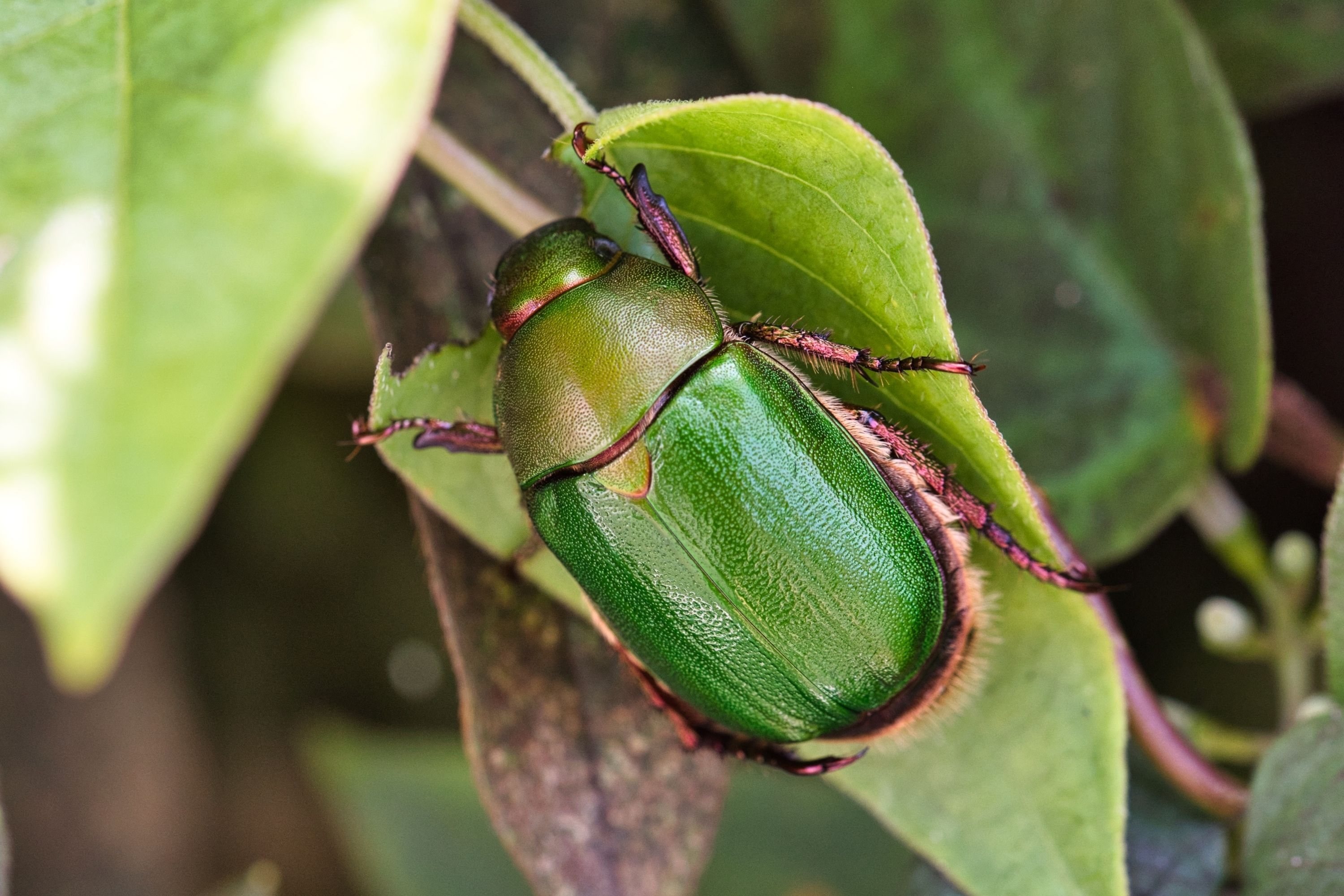Green June beetle
(Cotinis nitida)

Description
Cotinis nitida, commonly known as the green June beetle, June bug or June beetle,is a beetle of the family Scarabaeidae. It is found in the eastern United States and Canada, where it is most abundant in the South. It is sometimes confused with the related southwestern species figeater beetle Cotinis mutabilis, which is less destructive. The green June beetle is active during daylight hours. The adult is usually 15–22 mm (0.6–0.9 in) long with dull, metallic green wings; its sides are gold and the head, legs and underside are very bright shiny green. Their habitat extends from New Brunswick to Georgia, and as far west as California, with possible population crossover in Texas with their western cousin, the figeater beetle. The complete life cycle for the green June beetle is one year. Mating occurs in the early morning. The male is attracted by a strongly scented milky fluid secreted by the female. Mating lasts only a few minutes after which the female enters her burrow or crawls under matted grass. Once the mating process has taken place, the female will lay between 60 and 75 eggs underground during a two-week period. The eggs, when first laid, appear white and elliptical in shape, gradually becoming more spherical as the larvae develop. The eggs hatch in approximately 18 days into small, white grubs. The grubs will grow to about 40 mm (1.6 in) and are white with a brownish-black head and brown spiracles along the sides of the body. The larvae will molt twice before winter. The fully grown larva color is glassy yellowish white shading toward green or blue at the head and tail. The larva has stiff ambulatory bristles on its abdomen which assist movement. The larva normally travels on its back. The underground speed is considered more rapid than any other known genus of Scarabaeidae in the United States and is comparable to that of the hairy caterpillar. The larvae feed largely on humus and mold but can do considerable damage to plant root systems. Injury has been reported to vegetables and ornamental plants, particularly those which have been mulched. The larvae are considered pests when they cause damage to lawns or turf grasses. The insect is considered more injurious in its larval stages than as a beetle. Pupation occurs after the third larval stage, which lasts nearly nine months. The pupal stage occurs in an oval cocoon constructed of dirt particles fastened together by a viscid fluid excreted by the larva.
Taxonomic tree:







